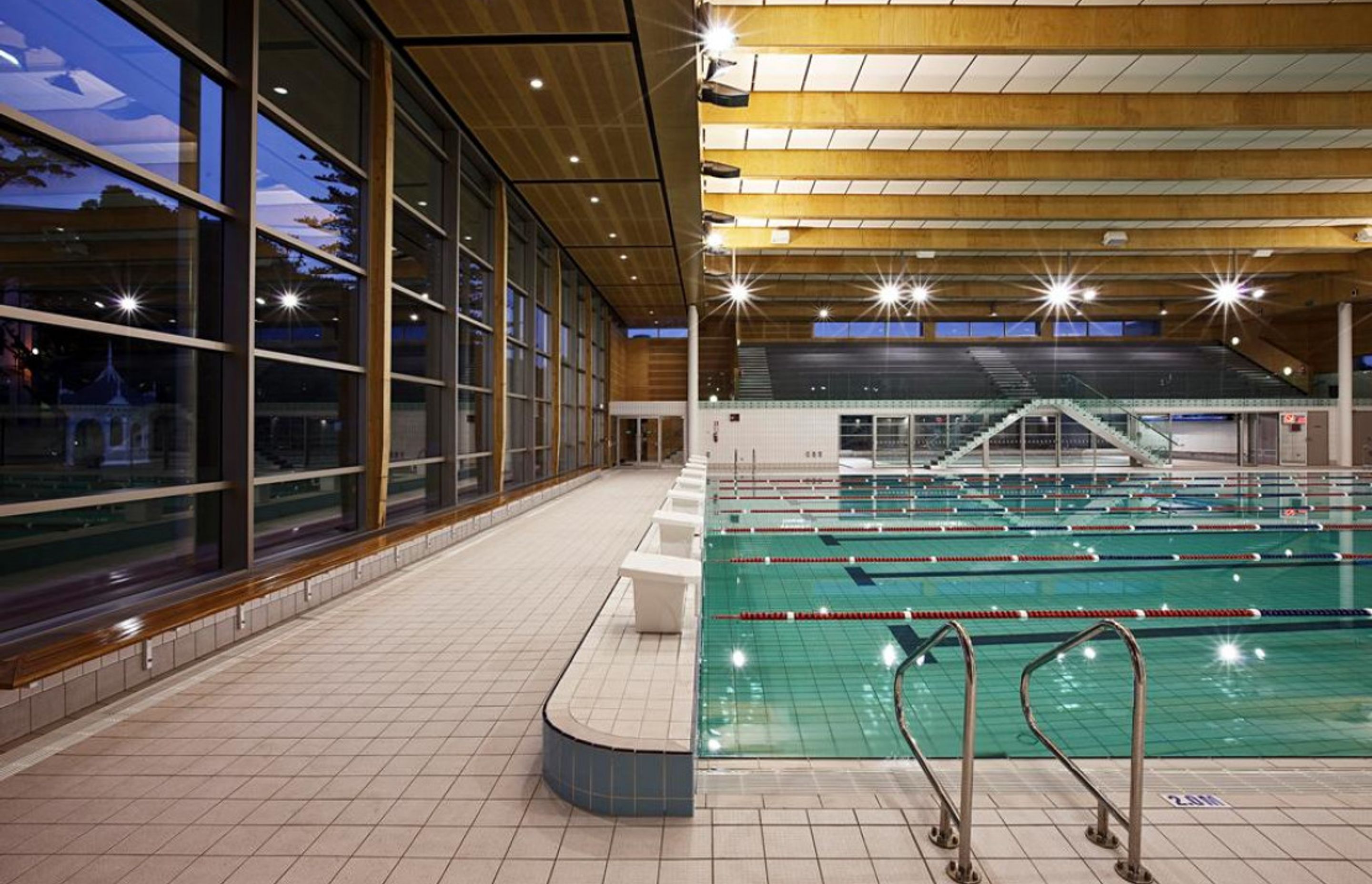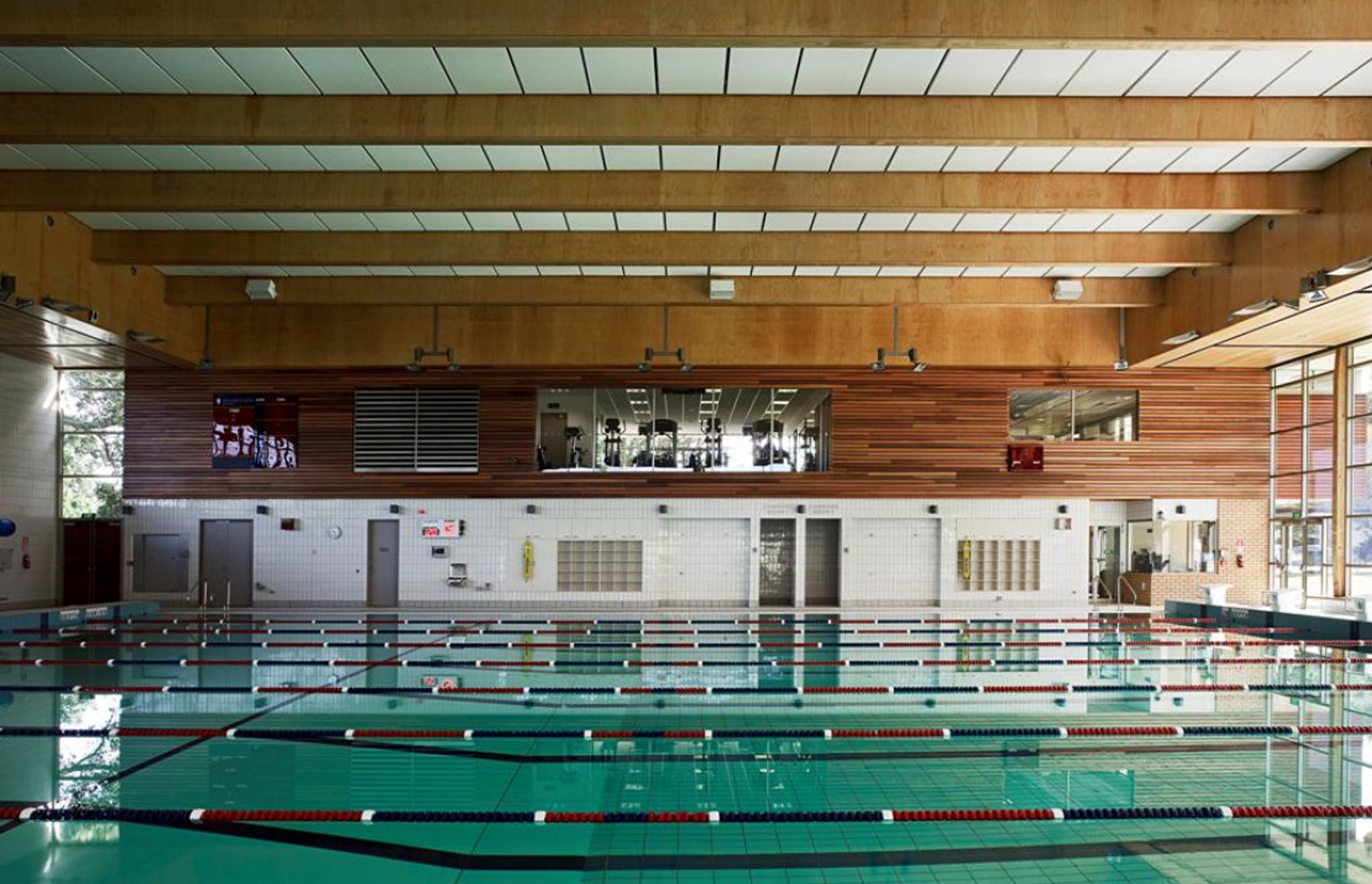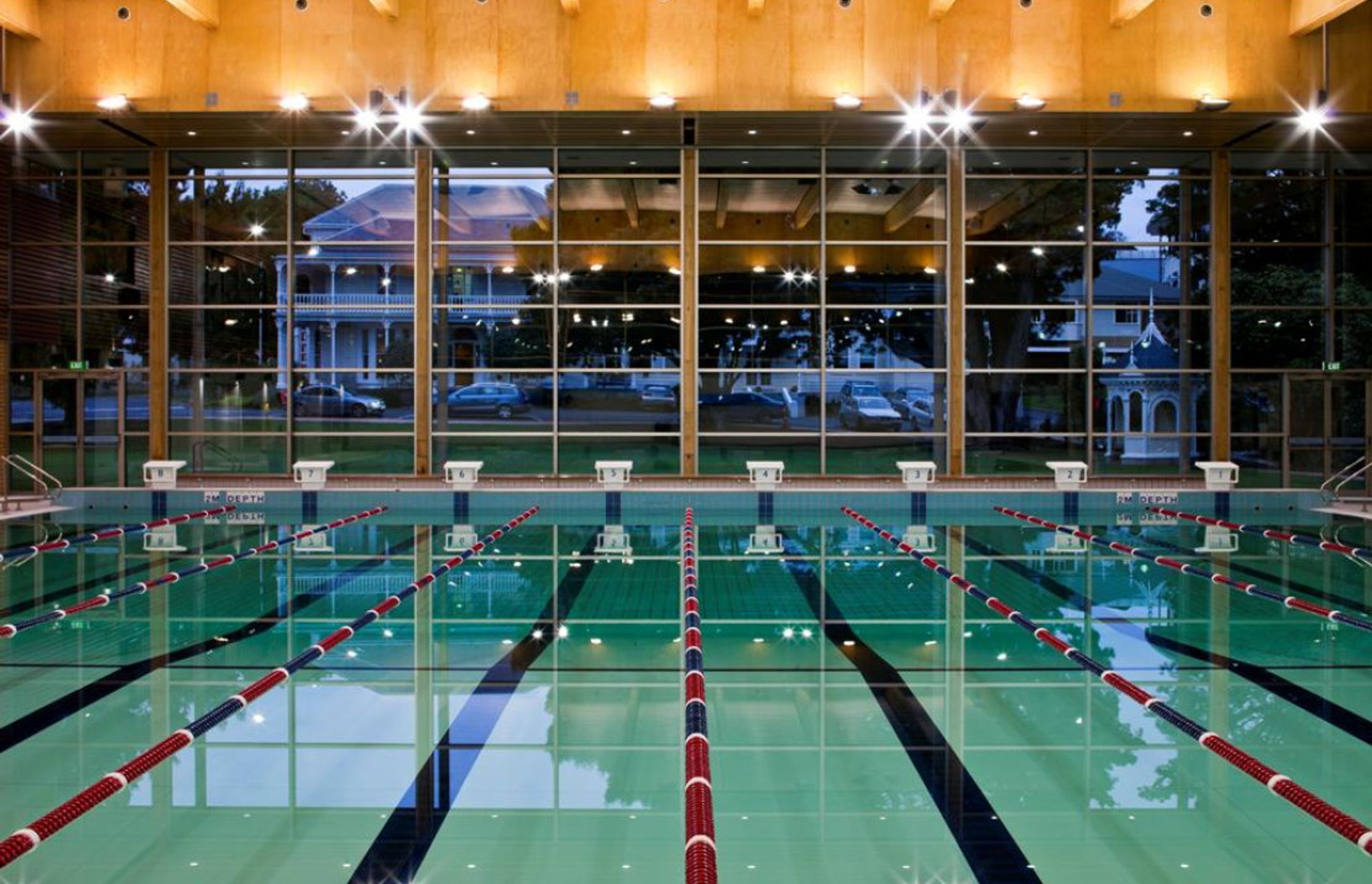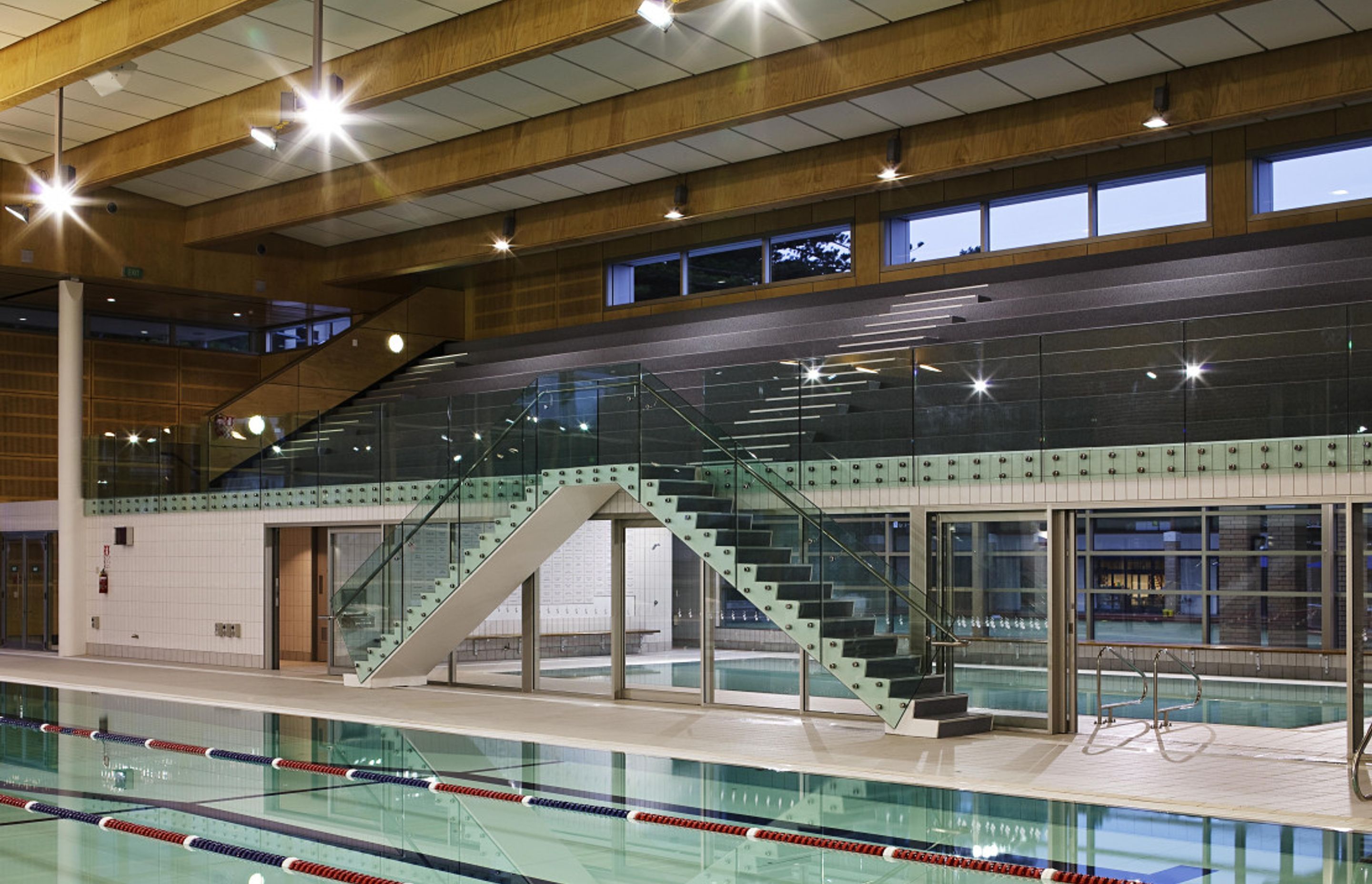Designing In The Deep End: Diocesan Aquatic Centre
By Carter Holt Harvey

- Products: hySPAN®
- Architect: Upton Architects
- Engineer: Structure Design
- Fabricator: Timberlab Solutions
- Contractor/Builder: Aspec Construction
Great design takes innovation to a new level; it demonstrates foresight and flexibility while staying true to what the client wants. The Diocesan Aquatic Centre at Diocesan School for Girls in Epsom, Auckland not only met the needs of the school, it exceeded them, according to Merle Boniface, Diocesan Director of Business and Planning. “From our perspective, it really leads the way in New Zealand and has enabled us to create a centre of excellence for Dio.”
The facility incorporates an eight lane 25 metre long main swimming pool with a movable depth floor system. There is seating for 400 people over a smaller junior pool, a fitness centre, a classroom and offices.
“We had a long wish list to put so much into such a tiny space and we feel we absolutely got what we wanted. Really, what was delivered was more than we even imagined,” says Merle. “There are lots of features that make the pool quite special and unusual.”
Not least, the significant use of timber which Merle credits for making the centre “more feminine and luxurious with a real sense of opulence.” The intention behind the use of timber is both visual and practical and a true collaboration between the architects, engineers, suppliers, manufacturers and contractors involved in the project. Durability was an essential consideration in a humid and chemically harsh pool environment. Timber provided a non-corrosive structure and was also determined to be the most sustainable option.
Using research done at the University of Canterbury the decision to build with post-tensioned box beams was made. It’s a technique that has long been used with concrete construction but rarely with timber. The custom prefabricated hollow box beams use hySPAN® from the Futurebuild® LVL range as the top and bottom chords. A series of steel cables runs through them and once in place, the beams are tensioned up at each end.
Graham Upton of Upton Architects preferred the more slender look of the Futurebuild LVL beams. “We didn’t want a chunky looking roof structure so once we told our engineer we wanted to pursue a timber structure he was keen to use the new technology with hySPAN.”
The rafter box beams, measuring 26 metres long and one metre deep, and the two main bearers, at 2.7 metres deep in box form, were prefabricated and manufactured by Timberlab Solutions Ltd. A big job, confirms Sales and Marketing Director Owen Griffiths. “Bringing the large beams to site was done in the middle of the night, not through the school drive-thru.”
The primary beams form an integral part of the pool enclosure as each cavity is filled with insulation. Part of the brief from Diocesan was that the acoustic level be manageable. According to Graham Upton, “it’s all about getting enough surfaces to absorb sound and with a pool that’s quite hard as there aren’t a lot of walls. The beams were integral in cutting the reverberant noise.” Owen Griffiths agrees. “I think it’s just another example of the efficiency of using timber in construction.”
Working closely with Principal Engineer Jon Haagh, Structure Design Ltd, Timberlab Solutions also had to pre-fit the tension cable conduit to make sure it would all tie up geometrically. The rafter beams were joined to the primary beams using coach screws and were designed to be self-supporting until lateral restraint and post-tensioning was installed.
To provide the structural engineering for the entire building, except the pool, Jon Haagh had to meet the critical requirements for strength and ease of construction. “We used Futurebuild LVL because of the high strength and improved properties over normal timber,” he says. “The whole roof is built from post-tensioned timber box beams.”







Professionals used in
Designing In The Deep End: Diocesan Aquatic Centre
More projects from
Carter Holt Harvey
About the
Professional
Carter Holt Harvey (CHH) is one of New Zealand’s leading forest products companies, manufacturing and supplying timber, laminated veneer lumber (LVL), plywood and other building products to the New Zealand market. Carter Holt Harvey together with its legacy companies has been a feature of the Australasian timber industry for more than 150 years. Carter Holt Harvey is organised into four business units: Carter Holt Harvey Building Products (CHH Timber), Carter Holt Harvey Plywood (CHH Plywood), Carter Holt Harvey LVL (Futurebuild®LVL) and Carters Building Supplies.
CHH Timber is one of the largest and oldest producers of timber building products across New Zealand. Manufacturing timber across the Kawerau, Kinleith and Nelson Mill facilities, CHH Timber produces brands Laserframe®and Pinex®for use in structurally graded or outdoor timber applications.
CHH Plywood specialises in the manufacture and supply of both structural and non-structural plywood products, with familiar brands such as Ecoply®, Shadowclad®, Ecoply Barrier and Handiply®. These brands are suitable for a range of applications subject to proposed use including structural, exterior cladding, interior lining applications, DIY and packaging among some of the many uses. The brands are specified and used within the New Zealand construction industry by Architects, Builders and DIY professionals. Operating in New Zealand for over 30 years, CHH Plywood is one of the largest producers of plywood in New Zealand and manufactures from its central North Island site at Tokoroa.
Futurebuild LVL offers the largest range of LVL products within New Zealand, which are used in projects across Australasia. Manufacturing LVL in the Marsden Point plant, Futurebuild LVL produces brands hySPAN®, hyJOIST®, hyONE®, hy90®, hyCHORD®, truFORM®, hyPLANK®, edgeFORM®, and hyFRAME® building systems. Futurebuild LVL products are used in applications such as floor joists, beams, rafters, lintels, truss chords and purlins in construction of residential, commercial, industrial and rural buildings, subject to design verification.
- ArchiPro Member since2020
- Locations
- More information





